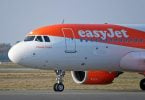Most of the exceeding revenues have been returned to the airspace users in year n+2 with no effect on the actual payers (because, as EUROCONTROL duly states. “Airlines pick up the costs through ‘en route’ and airport charges, so that in the end the passenger, or the shipper of freight, pays”) but on Airspace users’ financial statements only.

The above mechanism prevented the ANSPs to save those funds which could have been helpful in a systemic crisis like the current one and consequently States have been forced, wherever it has been possible, to finance the ANSPs to maintain their infrastructural capability during the crisis.
Now that the wind has shifted and the airspace users are requested to ask passengers and shippers a slightly higher fare to continue to fly in the safe European sky, they are crying asking further cost-cuts and gain of efficiency which, if possible, will help them only in very short time but will leave ANSPs next to operational bankruptcy in the medium time.
As we saw earlier, in the recent past actual costs have not increased in the same way as the traffic and this was one of the causes who led to the “Capacity crunch” experienced in 2018 and 2019.
Now, for the same and specular reasons, costs cannot be reduced below a certain threshold. ATM Infrastructure has shown its fundamental role in maintaining cohesion among Member States even in case of lack of “commercial” traffic and now it has to be maintained and enhanced to avoid a “Provision crunch” as soon as the traffic returns to pre-covid level.
Both the gradual return of air traffic and the need for ANSPs to ensure the required capacity should be taken into account to avoid this “crunch” and our opinion is that the legal framework now under scrutiny in the Appeal Committee has to ensure that all aviation stakeholders have the necessary means to support the cohesion among European citizens, their safety and their lifestyle.
Considering the above points, ATCEUC requests those in charge of assessing and voting any proposal on the future of the ATM system, including its funding, to look very carefully at the medium- and long-term consequences of their decisions, both at national and at pan-European level.
Air Traffic Controllers European Unions Coordination (ATCEUC) was created in 1989 and is currently composed of 32 professional and autonomous trade unions representing more than 14000 Air Traffic Controllers (ATCOs) and Air Traffic Safety Electronics Personnel (ATSEPs) throughout Europe. ATCEUC is part of the “European Union Sectoral Social Dialogue – Civil Aviation” in the air traffic management field and it is recognised as a full member of the ICB. ATCEUC with its experts participates in every work group where the voice of its Members can and have to be expressed: SESAR JU, TSG, EGHD, EASA STeB, EASC, ASPReT, ATM Partners and other workshops or programmes within the framework of EUROCONTROL and the European Commission.
(eTN): No Emergency Plans: ATCEUC releases a Snapshot on Air Traffic Management in Europe | re-post license | post content






















